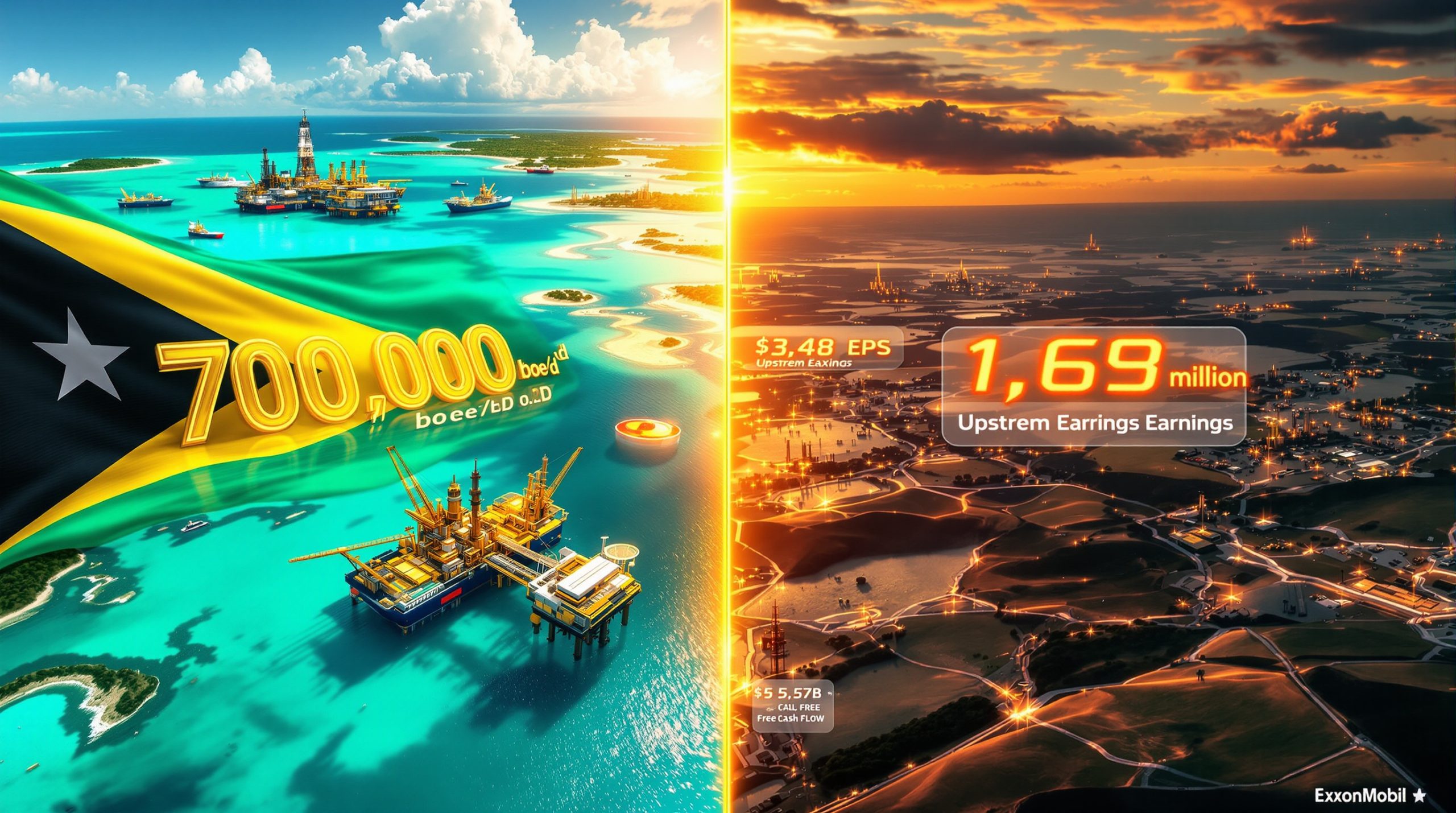Exxaro's Strategic Acquisition of South African Manganese Assets: A Game-Changing Move
South Africa's mining landscape is witnessing a significant transformation as Exxaro Resources prepares to acquire substantial manganese assets for R11.67 billion ($637.1 million). This strategic move represents a pivotal shift for the traditionally coal-focused mining company, positioning it as a major player in the manganese sector—a critical mineral for both traditional steel production and emerging clean energy technologies.
The acquisition comes at a time when global demand for manganese is increasing, driven by both traditional steel markets and the growing battery materials sector. By securing these assets, Exxaro is strategically diversifying its portfolio while aligning with the global critical minerals energy transition.
The Strategic Value of the Manganese Acquisition
Exxaro's manganese acquisition represents one of the most significant mining deals in South Africa in recent years. The transaction encompasses several key assets that collectively position the company as a major force in the manganese sector.
Key Assets Being Acquired
The transaction includes:
- 74% share in Ntsimbintle Mining
- 19.99% stake in Jupiter
- 100% interest in Ntsimbintle Marketing and Trading
- 51% ownership in Mokala
- 9% share in Hotazel Manganese Mines
These holdings give Exxaro access to four operating mines in the prestigious Kalahari Manganese Field (KMF), which contains over 70% of the world's known manganese reserves according to the USGS Mineral Commodity Summaries (2024).
Perhaps most significantly, the deal secures 60.1% effective ownership in the Tshipi Borwa Mine, one of the largest single manganese mines globally, producing approximately 3.3 million tonnes annually. This mine alone represents a substantial revenue generator with established export channels.
Operational Benefits
The acquisition provides Exxaro with:
- Immediate production capabilities: Access to operating mines means immediate revenue streams without development delays.
- Marketing rights: Complete control of Ntsimbintle Marketing and Trading provides vertical integration advantages.
- Scale potential: The deal value could increase to R14.64 billion if Blue Falcon exercises its tag-along rights, potentially expanding Exxaro's manganese footprint further.
- Strategic timing: Expected completion in Q1 2026 allows for methodical integration while global battery metals investment continues to rise.
"This transaction puts together two strong BEE companies who are both consistent dividend payers and positions Exxaro as a formidable and diversified mining company of reference in South Africa," stated Ben Magara, Exxaro CEO.
The Mokala Mine, a joint venture with OM Holdings, produces high-grade manganese ore primarily for Asian steel markets, while the Hotazel Manganese Mines have established supply relationships with European ferroalloy producers.
Why is Manganese Strategically Important?
Manganese occupies a unique position in the minerals market, straddling both traditional industrial applications and emerging clean energy technologies. This dual role makes it particularly valuable as global economies navigate the energy transition.
Industrial Applications and Growth Markets
Manganese's importance stems from its versatility:
- Steel production: Approximately 90% of global manganese consumption is in steelmaking, where it serves as an essential deoxidizer and alloying element that increases strength and wear resistance.
- Battery technologies: Manganese is a key component in several lithium-ion battery chemistries, including NMC (Nickel-Manganese-Cobalt) cathodes widely used in electric vehicles.
- Clean energy applications: Beyond batteries, manganese is utilized in various clean energy technologies including solar panels and wind turbines.
- Supply chain security: As countries prioritize critical mineral security, manganese has been identified as strategically important by the EU, US, and Japan.
According to Wood Mackenzie (2024), manganese demand for batteries is projected to triple by 2030, driven largely by electric vehicle production growth. Tesla's announcement of cobalt-free "High-Manganese" batteries further underscores the mineral's growing importance in next-generation energy storage.
High-purity manganese (≥99.9%) used in battery applications commands premium prices of approximately $2,500 per tonne, substantially higher than standard metallurgical grade material.
Geographic Significance of the Kalahari Manganese Field
The Kalahari Manganese Field (KMF) represents a geological treasure:
- Unparalleled concentration: Located in South Africa's Northern Cape Province, the KMF accounts for approximately 30% of global manganese production.
- Superior ore quality: The region produces high-grade ores with manganese content averaging 37-38%, substantially higher than the global average of 28%.
- Established infrastructure: Despite logistical challenges, the region has developed export channels through Port Elizabeth and other facilities.
- Long-term production potential: With estimated reserves of 4 billion tonnes, the KMF offers decades of production potential compared to Gabon (2.2 billion) and Australia (1.5 billion).
The field's strategic value is enhanced by South Africa's established mining code and relatively stable regulatory environment compared to some competing jurisdictions.
How Does This Fit Into Exxaro's Transformation Strategy?
Exxaro's manganese acquisition represents a calculated evolution in the company's long-term strategy, moving beyond its historical focus on coal toward a more diversified and future-oriented mineral portfolio.
Diversification Beyond Coal
Exxaro's strategic pivot includes several key elements:
- Reduced carbon exposure: By expanding into manganese, Exxaro reduces its relative exposure to coal markets facing long-term structural challenges.
- Portfolio balancing: The company maintains its cash-generating coal operations while building positions in minerals with growth potential.
- Risk mitigation: Geographic and commodity diversification provides protection against market-specific downturns.
- Shareholder value creation: The acquisition targets assets with established production and cash flow profiles, supporting Exxaro's consistent dividend history.
This balanced approach allows Exxaro to maintain its strong market position in thermal coal while systematically building new growth pillars in minerals aligned with global economic trends.
Alignment with Energy Transition
Exxaro has strategically positioned itself for the evolving energy landscape:
- Battery materials focus: Manganese's role in lithium-ion batteries makes it a logical target for mining companies seeking energy transition exposure.
- Leveraging existing competencies: Bulk commodity mining and logistics expertise transfers well to manganese operations.
- Infrastructure advantages: Exxaro's established relationships with Transnet and other logistics providers will benefit manganese transportation.
- Sustainable mining approach: The company's experience with environmental management in coal can be applied to manganese operations.
Exxaro appears to be following a pathway similar to diversified miners like Rio Tinto and Anglo American, which have strategically increased their exposure to battery materials and reduced relative coal positions, reflecting broader mining industry evolution.
What Makes This Deal Significant for South Africa's Mining Sector?
The acquisition has implications that extend beyond Exxaro's corporate strategy to impact South Africa's broader mining landscape and economic development goals.
Black Economic Empowerment Implications
The transaction represents a milestone for South Africa's economic transformation agenda:
- Black-owned mining champions: The combination of two strong Black Economic Empowerment (BEE) companies creates a more powerful entity with greater scale.
- Local resource control: Strategic mineral assets remain under South African ownership rather than being acquired by multinational mining houses.
- Wealth distribution: Expanded dividend flows to BEE shareholders supports broader economic participation.
- Regulatory alignment: The transaction reinforces South Africa's mining charter objectives for increased Black participation in the mining sector.
"This landmark transaction reinforces Exxaro's position as a South African mining champion… [and] provides certainty to our valued employees and host communities," noted Saki Macozoma, Chairman of Safika and Ntsimbintle Holdings.
The deal demonstrates how South Africa beneficiation opportunities can progress through commercial transactions rather than only through regulatory mandates.
Economic and Employment Impact
The acquisition creates several positive economic outcomes:
- Job preservation: Continued operation of the mines under Exxaro's stewardship secures thousands of direct and indirect jobs.
- Supply chain benefits: Local procurement policies support small and medium enterprises in mining communities.
- Export revenue generation: Manganese exports contribute significant foreign exchange earnings to South Africa's economy.
- Skills development: Exxaro's established training programs can extend to manganese operations, enhancing workforce capabilities.
The Northern Cape province, where these assets are located, particularly benefits from continued mining investment, as the region has limited alternative economic drivers beyond mining and agriculture.
How Will Exxaro Leverage Its Expertise in This New Sector?
While manganese represents a new commodity for Exxaro, many of the company's core competencies and competitive advantages will transfer effectively to these operations.
Operational Synergies
Exxaro brings several operational strengths to its manganese assets:
- Bulk mining expertise: Experience in large-scale open-pit operations transfers directly to manganese mines like Tshipi Borwa.
- Mechanical handling systems: Coal handling and preparation plant knowledge can be adapted to manganese processing.
- Maintenance management: Fleet and equipment maintenance systems can be implemented across both coal and manganese operations.
- Digitalization initiatives: Exxaro's investments in digital mining technologies can be deployed to improve manganese operating efficiencies.
The company's established culture of operational excellence should translate well to manganese mining, which shares many technical similarities with Exxaro's existing operations.
Commercial and Regulatory Advantages
Beyond operational capabilities, Exxaro brings important commercial strengths:
- Regulatory compliance systems: Established environmental, safety and health management systems meet South African regulatory requirements.
- Community engagement models: Proven approaches to social license maintenance can be applied to manganese communities.
- Government relationships: Strong connections with mining authorities facilitate permitting and compliance processes.
- Marketing capabilities: While manganese markets differ from coal, Exxaro's experience in commodity marketing provides a foundation for expansion.
Exxaro's standing as a trusted South African mining company positions it well to navigate the regulatory and social complexities of operating in the Northern Cape.
What Challenges Might Exxaro Face in This Acquisition?
Despite the strategic logic, Exxaro will face several significant challenges in executing this acquisition and realizing its full potential.
Integration Complexities
The integration process presents several hurdles:
- Cultural alignment: Merging different corporate cultures and operating philosophies requires careful change management.
- Systems harmonization: Aligning technology platforms, reporting structures, and operating procedures takes time and resources.
- Knowledge transfer: Capturing manganese-specific expertise from existing operations will be critical for continuity.
- Management attention: Balancing focus between coal operations and the new manganese business requires disciplined leadership.
These integration challenges are common in mining consolidation strategies but require proactive management to prevent operational disruptions or value leakage.
Market and Economic Considerations
External factors also present risks:
- Price volatility: Manganese ore prices have historically shown significant volatility, fluctuating between $4.50–$6.20 per dmtu in 2023 alone according to LME data.
- Chinese demand dependence: China consumes approximately 60% of global manganese, creating concentration risk.
- Infrastructure constraints: South African rail disruptions caused approximately $300 million in lost mineral exports in 2023, according to the South African Chamber of Mines.
- Competing suppliers: Australia and Gabon are expanding manganese production, potentially pressuring market prices.
Exxaro will need to develop contingency plans for Transnet rail delays, which have plagued South African mineral exporters in recent years, potentially including road transport alternatives despite their higher cost.
What Does This Mean for Investors?
From an investment perspective, Exxaro's manganese acquisition presents a compelling but complex opportunity that changes the company's risk-return profile.
Financial Implications
Investors should consider several financial aspects:
- Earnings diversification: Reduced reliance on coal provides some insulation against thermal coal market fluctuations.
- Cash flow stability: Manganese operations with established production profiles support Exxaro's dividend capacity.
- Balance sheet impact: The substantial acquisition price will temporarily increase leverage until deal synergies materialize.
- Valuation multiples: Diversified miners typically trade at higher multiples than pure-play coal producers, potentially benefiting Exxaro's valuation.
Both Exxaro and Ntsimbintle have histories as consistent dividend payers, suggesting the combined entity will maintain a shareholder-friendly distribution policy.
Future Growth Prospects
The acquisition positions Exxaro for several growth avenues:
- Production expansion: Existing mines have brownfield expansion potential at lower capital intensity than greenfield development.
- Beneficiation opportunities: Moving up the value chain into manganese alloys or high-purity manganese for batteries offers margin enhancement.
- Further acquisitions: The initial manganese position could serve as a platform for additional deals in battery materials.
- Technology implementation: Digital mining technologies could drive productivity improvements across the acquired assets.
For long-term investors, Exxaro's strategic repositioning offers exposure to both the continuing cash flows from coal and growing demand for energy transition minerals.
FAQs About Exxaro's Manganese Acquisition
What is the timeline for completing this acquisition?
The transaction is expected to be completed in the first quarter of 2026, subject to regulatory approvals and standard closing conditions. Key milestones include competition authority review, mining license transfers, and shareholder approvals.
How will this acquisition impact Exxaro's environmental strategy?
This acquisition aligns with Exxaro's broader strategy of diversifying beyond coal into minerals that support renewable energy technologies. While manganese mining has its own environmental footprint, the end-use applications in renewable energy technologies potentially position Exxaro to improve its overall sustainability profile over time.
What is the significance of manganese in future technologies?
Manganese plays a dual role in future technologies. It remains essential for producing high-strength, lightweight steels used in fuel-efficient vehicles and wind turbines. Additionally, it's becoming increasingly important in battery technologies, particularly NMC cathodes for electric vehicles and energy storage systems supporting renewable energy infrastructure.
How does this deal affect South Africa's position in global manganese markets?
The transaction maintains South African ownership of strategic manganese assets while potentially strengthening the country's competitive position through Exxaro's operational expertise and financial capacity. By creating a stronger South African manganese champion, the deal helps ensure the country maintains its leadership in global manganese production despite growing competition from Australia, Ghana, and Gabon.
Disclaimer: This article contains forecasts and analysis based on current information. Future outcomes may differ from projections due to market volatility, regulatory changes, and other factors. Readers should conduct their own due diligence before making investment decisions related to companies or sectors discussed.
Want to Spot the Next Major Mineral Discovery?
Discover how major mineral discoveries like Exxaro's manganese acquisition can deliver substantial market returns by exploring Discovery Alert's dedicated discoveries page. Our proprietary Discovery IQ model delivers real-time alerts on significant ASX mineral discoveries, giving you the market edge to act before the broader market recognises the opportunity at https://discoveryalert.com.au/discoveries/.




